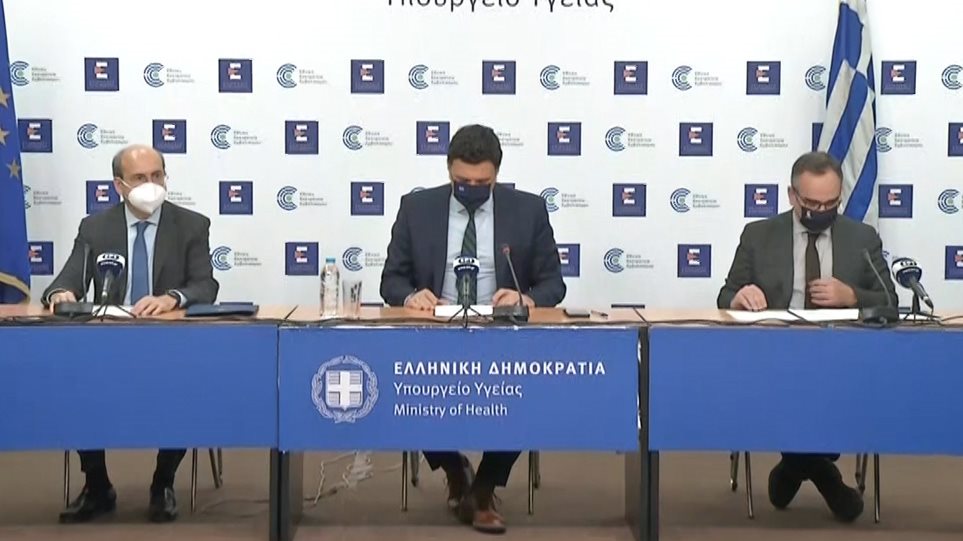ναι αλλα χωρις κορονοιο αυτο το 97% θα ζουσε, ο κορονοιος ξεχειλησε το ποτηρι. τωρα αν θα ζουσαν αλλα 2 χρονια ή 4 και θα πεθαιναν απο επιπλοκες γριπης ή καποιας αλλης πνευμονιας, εκτιμησεις μπορουν να γινουν
Ασχετε και αγραμματε εξυπνακια ,μια και εχεις γνωμη επι εμβολιων και γενετικης με υφος 12 καρδιναλιων μηπως μπορεις να μας εξηγησεις τι λενε οι ποιητες εδω?Γιατι αν μπορεις να το καταλαβεις ,που αμφιβαλλω,θα δεις γιατι μερικα ατομα πεθαινουν και οχι αλλοι και γιατι το εμβολιο ειναι επικινδυνο.Εσυ το ονομαζεις εμβολιο ,στην πραγματικοτητα ειναι χειραγωγηση κυτταρου.Αντε λοιπον βοηθε βιολογου,πες μας.Και προσεξε η εργασια αυτη
εγινε το 2018.Ε?
Front. Microbiol., 05 December 2018 |
https://doi.org/10.3389/fmicb.2018.02991
Viral-Induced Enhanced Disease Illness
 Maria K. Smatti
Maria K. Smatti,
Asmaa A. Al Thani and
 Hadi M. Yassine
Hadi M. Yassine*
Coronaviruses
Severe Acute Respiratory Syndrome Coronavirus (SARS-CoV)
SARS-CoV first appeared in 2002 in the Guangdong province of China, followed by an epidemic in 2003, in which 26 countries were affected resulting in more than 8000 cases (
WHO, 2003). Although SARS-CoV primarily infects the respiratory tract, it was found that it can directly infect and replicate in human immune cells despite the absence angiotensin I-converting enzyme 2 (ACE2; SARS receptor) on these cells (
Li et al., 2004;
Kuba et al., 2005;
Imai et al., 2007). Antibody-mediated cell entry was suggested as a possible mechanism for SARS-CoV infection of immune cells (
Taylor et al., 2015). Accordingly, Several studies have investigated the mechanisms underlying SARS-CoV mediated ADE. It was initially reported by Kam et al. that immunization with recombinant full-length SARS-CoV spike S-protein elicited protective immune response
in vivo, but induced viral infection of human B cells
in vitro via FcγRII-dependent and ACE2-independent pathways, suggesting novel ADE mechanism for SARS-CoV (
Kam et al., 2007). Similarly, results of Jaume et al. study showed that anti-spike antibodies were able to potentiate infection of immune cells with both SARS-CoV spike-pseudotyped lentiviral particles (SARS-CoVpp) and replication-competent SARS-CoV. Likewise, this antibody-mediated infection was FcγRII dependent and ACE2 independent (
Jaume et al., 2011). Another study demonstrated that enhancement of infection with replication-competent SARS-CoV as well as SARS-CoVpp in microphages was linked to anti-spike IgG, specifically through FcγRII signaling (
Yip et al., 2014). Wang et al. found that ADE response is stimulated by antibodies against SARS-CoV spike proteins rather than nucleoproteins (
Wang et al., 2014). It was also shown in the same study that ADE response was dependent on antibody titers, as sera with high antibodies concentration neutralized the virus, while diluted sera significantly enhanced the infection and induced more apoptosis (
Wang et al., 2014). Classically, following its binding to ACE2 receptor, SARS-CoV enters susceptible cells through pH-dependent endocytosis (
Yang et al., 2004). Moreover, the lysosomal cysteine protease cathepsin L was found to play a crucial role to achieve an efficient infection (
Huang et al., 2006). In contrast, FcR-mediated infection occur independently of the endosomal acidic pH or the activity of cysteine proteases (
Jaume et al., 2011). Unfortunately, clinical studies investigating ADE in SARS-CoV patients are limited. Several studies have reported no correlation between the clinical outcome and anti-SARS-CoV antibodies in affected individuals (
Taylor et al., 2015). To the contrary, other studies correlated poor prognosis with early SARS-CoV seroconversion (
Ho et al., 2005). Like the story with other viruses, vaccine-induced disease enhancement is also a concern with developing a SARS-CoV vaccine. This was reported in only small subset of SARS-CoV vaccine studies (
de Wit et al., 2016). In a mouse study that investigated the role of SARS-CoV vaccine in inducing disease enhancement,
Tseng et al. (2012) it was revealed that vaccines were able to protect against SARS-CoV infection, but still induced Th2 directed pulmonary immunopathology suggesting hypersensitivity to SARS-CoV components. In another study, post vaccination challenge of mice with SARS-CoV nucleocapsid protein induced sever pneumonia (
Yasui et al., 2008). Likewise, double inactivated SARS-CoV vaccine in mice failed to provide complete protection and caused enhanced eosinophilic pro-inflammatory pulmonary response after infection (
Bolles et al., 2011). Even with the current available data supporting the correlation between ADE and SARS-CoV preexisting antibodies, more studies are critically needed to accurately address and understand this issue in humans.
Middle East Respiratory Syndrome Coronavirus (MERS-CoV)
MERS-CoV was first discovered in humans in 2012. Since then, more than 2000 cases and 700 fatalities were reported worldwide (
WHO, 2017). Vaccination approaches for this virus also targeted the spike protein. Some of these vaccines were evaluated in non-human models and they were shown to reduce lung pathology following challenge with MERS-CoV. Nonetheless, like other coronaviruses, vaccine-induced disease enhancement is also a concern in MERS-CoV vaccine development. MERS-CoV preexisting antibodies have been recently shown to contribute in disease enhancement. In this very recent study by Houser et al (
Houser et al., 2017), researchers used New Zealand white rabbits as a model of asymptomatic MERS-CoV infection to evaluate the role of primary infection in protection from reinfection. Results showed that rabbits developed non-neutralizing antibodies against MERS viral proteins, which were not only non-protective, but also induced enhanced pulmonary inflammation, without increase in viral replication. Moreover, passive transfer of serum from infected to naïve rabbits led to disease enhancement. Further investigations revealed the contribution of complement proteins in this enhanced pathology. Specifically, an increase of C3a and C9 proteins was observed, where these proteins are responsible for the release of anaphylotoxins and recruitment of immune cells, leading to inflammation (
Houser et al., 2017). In another recent study, vaccinated transgenic mice with whole inactivated MERS-CoV developed eosinophilic infiltration combined with enhanced lung disease after MERS-CoV challenge (
Agrawal et al., 2016). Despite the lack of evidence of MERS-CoV-induced ADE in humans, observations from animal studies highlight the risk of potential development of enhanced disease, including sever lung pathology, in individuals who are previously infected/vaccinated with MERS-CoV. Further, the presence of non-neutralizing cross-reactivity between MERS-CoV and other circulating human coronaviruses could contribute to MER-CoV-induced ADE. Yet, this remains unstudied and requires further investigation while developing and testing coronaviruses vaccines.









 Maria K. Smatti
Maria K. Smatti
 Hadi M. Yassine
Hadi M. Yassine
